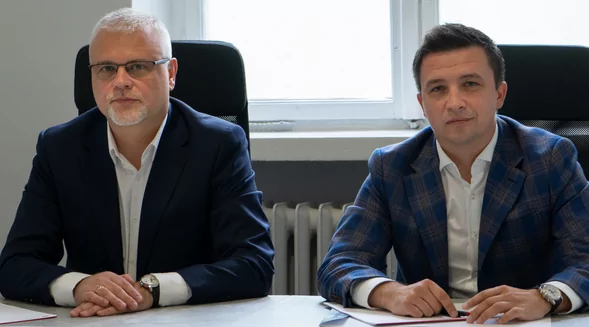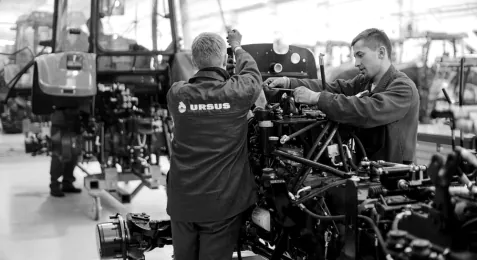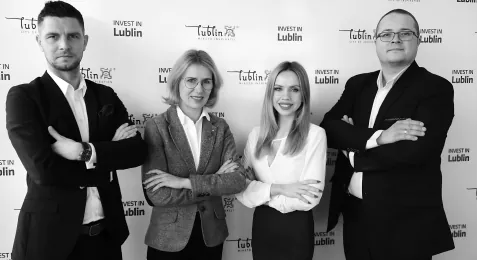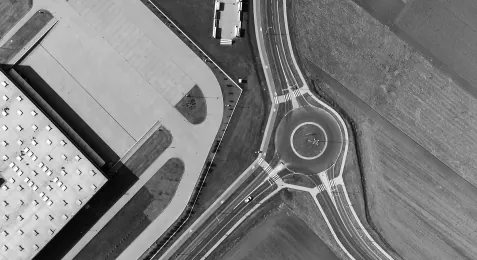Lublin Info Centre
Keep a CosmoEye on your business operations
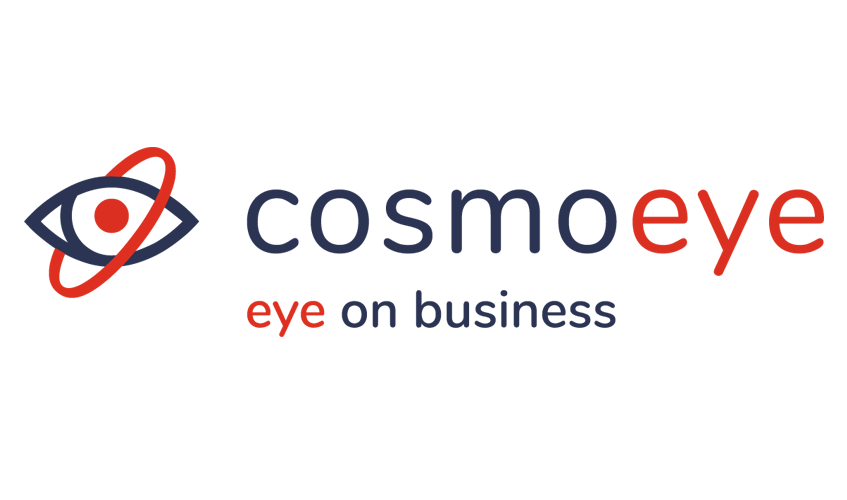
How did you come up with the idea for CosmoEye and what stage of development are you currently at?
The idea to create the CosmoEye system was born a year ago. After many conversations and analyses, we saw a market demand in the area of production process improvement. Our findings are the result of many years of professional experience in manufacturing companies. We were both creators and users of controlling and supervising systems for areas such as production, warehouse, sales and finance. The main reason for creating CosmoEye solution was insufficiency that resulted from working on data generated by WMS, CRM, ERP and finance & accounting systems. When analysing the data using statistical methods, we managed to search for occurrences that surpassed the assumed level. We noticed, for example, a significant exceeding of the time norms for performing a certain activity in the production process. What was missing, however, was the ability to turn back time and look at what exactly happened at a particular stage of production. CosmoEye provides such possibilities. At the core of its foundation is the idea that managers should be informed about disturbing events in the company in real-time. Only then they can react almost immediately and prevent critical incidents.
We also had a feeling that the CosmoEye system was simply a good business idea. Arkley Brinc fund decided to invest in our project. The process of acquiring an investor itself lasted from October 2021 to February 2022. Formally, our company has been operating since the beginning of February this year, and we signed the investment agreement on April 1.
As for now, we have developed the MVP concept and finished working on it. We are currently in the production and testing phase. I think we will sign the first three contracts within a month. We are already after talks with two companies from the Lublin region and one from Lower Silesia, who are eager to implement the system.
How would you describe the solution you offer?
Generally speaking, CosmoEye is a system using artificial intelligence, the implementation of which contributes to the improvement and optimization of business processes in companies of various business profiles, as well as to quality control and improvement of work safety. The system, equipped with AI algorithms that process digital images from video cameras in a very short time, can provide solutions to find, recognize, classify an event on the screen, and then inform specified persons about it via a mobile application. It can inform a manager about the appearance of a person or vehicle in an unauthorized area after working hours. What is more, the system observes the movement paths of employees in production and warehouse halls, measures their net-working time and indicates moments of inactivity. It is also used in the process of quality control or correct packaging of goods for release. CosmoEye can be a solution wherever any activity metering has been difficult or even impossible to be checked.
Can these solutions be set individually?
Given the entire spectrum of system capabilities, we can teach our model to recognize any predetermined event.
Are there similar solutions already on the market?
CosmoEye’s solution is an original system. Some solutions are very similar to ours but they are used mostly in the safety industry. Security companies, by installing video surveillance on entrance gates, define zones where a person or car should not move. I have not come across such a solution that is used inside a manufacturing or logistics company though. In addition, at the moment monitoring in companies is used to check post factum what and how something happened and who was involved in the incident. Our system provides real-time information. There is no such solution on the market.
How has the market responded to the system you offer?
We started with relatively simple solutions related to compliance with health and safety regulations. In the first version of our system, we focused on identifying safety violations that should be recorded, but very often are not, either because they go unnoticed or are treated leniently, such as working in the halls without a helmet or safety glasses or crossing non-movement areas.
The feedback from the market has turned out to be very useful as it has given us brand new ideas for possible new applications of our system. The companies were asking us questions concerning for example inactivity of employees or the possibility of spotting their absence at a workstation. There was also an inquiry related to identification of shortages, so we are also currently working on a solution that will help solve problems of theft in a workplace.
What is a general workplace monitoring policy? Does your system enable to monitor employees without infringing on their rights?
The main task of our system is to detect significant incidents and report them to authorized persons, not to “track” the actions of specific individuals. We focus on processes and their importance to the business.
The operation of our system is mainly based on data processing, so to be certain our system meets legal regulations criteria we cooperate with a law firm specializing in GDPR. Monitoring is already standard in workplaces, the staff need to be informed about it though. Usually employees, by signing a contract, additionally give their written consent to be recorded at their workstations. However, only employees and the client’s management have access to the system’s recording. They are not transferred to third parties.
In one of our business models, more precisely in e-commerce, we want to document the packaging process so that in case of any complaints we can show the video to the customer and verify whether the damage was caused by the company or not. In this solution we don’t want to record employees, so to prevent their identification we blur their faces on the video. This solution was implemented at one of our clients and resulted in a 90% decrease in complaints.
You have mentioned something about your business model. Can you elaborate on that?
Our business model, which we call “Enterprise Solution”, is focused on medium and large manufacturing and logistics companies. Our customers have various specific needs, such as optimizing complaint and deficiency rates, maintaining occupational health and safety, as well as a satisfactory level of quality control process, adhering to the standards imposed by HACCP (Hazard Analysis and Critical Control Points), and documenting processes with video images. Each of these areas is extremely complex and requires constant monitoring of its progress and analysis of changes occurring in it. CosmoEye helps companies monitor these processes and troubleshoot critical situations.
Using video monitoring, we are able to draw the path of movement of a particular employee and check his behaviour during a specific process. The system can help to find out why a similar order is completed by one employee in 20 minutes, while the other needs two hours for it. Our solution provides data that was previously unmeasurable but drawing conclusions from it is a company’s job. We use the application of both artificial intelligence and machine learning.
So artificial intelligence is more of an algorithm while machine learning is a process?
You could say that. Artificial intelligence is a whole system, while machine learning is an effective working mechanism.
So, in a nutshell – the algorithms used in machine learning allow you to learn and make simple decisions based on that. The learning process relies on providing quality synthetic input data, which serves as a foundation for pattern recognition during the training process and making decisions based on it. The effectiveness of ML algorithms strongly depends on the quantity and quality of sequence data.
So, theoretically, any repetitive process that we can represent digitally – whether in the form of numerical data, image or audio – can be treated as a database for learning. ML algorithms that are taught particular processes can spot any anomalies, deviations from norms, potential abuses or critical events.
To power up the system, we need to enter about 15,000 images into it. Only then is it able to catch an undesirable situation, such as an employee having an earring on the production floor. In this case, we would have to predict an infinite number of configurations of earring placement: in the ears, in the nose, in the eyebrow, and so on and so on. We have developed our own sequence modelling, which we use to simulate the customer’s intended objective.
Was the decision of locating your business in Lublin translated into the development of your company?
Of course. Everything that we create within CosmoEye is related to Lublin – from subcontractors to video servers. We work together with the Lublin community on either a B2B or employment contract basis and closely cooperate with scientists from local universities.
What percentage of your expenditure is spent on research and development?
Practically 100%. However, to answer the question precisely, 60-70% of our funds go to product development. The initial commercial implementations can in fact also be described as R&D, because we have to learn not only how the product works in general, but also how it functions in a specific environment. When it comes to machine learning, the second part of R&D is financed by a customer who decides to implement our system.
The remaining 30% is spent on marketing activities, including, among other things, participation in trade fairs or publications in the national media. There are a lot of companies on the Polish market that are doing great things in AI. However, they operate locally and thus are not known. We focused on extensive communication. Without reaching out with information to companies potentially interested in our system, we are not able to do anything.
What can we do to further develop Lublin’s potential as a centre for creating high technologies?
From our point of view, it would be beneficial to get to know people involved in technologies. We are particularly interested in developers, programmers, as well as people involved in algorithms, artificial intelligence, machine learning and image processing. It would certainly be valuable to exchange experience and knowledge with specialists within, for example, an industry business club or other organization that is specialized in this particular field.
I make no secret of the fact that we are also in talks with highly developed Ukrainian centres, which, in my opinion, have surpassed the American ones. We can perfectly observe this in the ongoing war in Ukraine. They use artificial intelligence to destroy tanks. There are currently no better image-processing experts than the Ukrainians. We are also open to further cooperation with scientists from Lublin universities.
